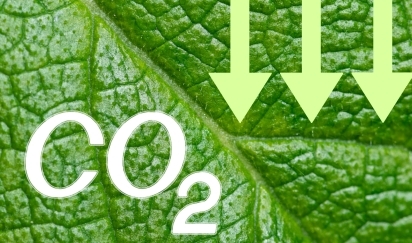"It is very difficult to know exactly what is going to happen and where"
<p> Elisa Sainz de Murieta, expert in climate change and researcher at the UPV/EHU and at BC3, opens the cycle of conferences organised by the Donostia Sustainability Forum in 2022. In her speech, she gave a general description of the problem’s current situation and analysed how we could act from now on. Her conclusion is that, from an economic point of view, protecting the climate also has greater benefits than doing nothing.</p>

Elisa Sainz de Murieta holds a PhD in Geology and researches the impacts of climate change, as well as environmental policies and adaptation measures, from a socio-economic point of view. She began her speech with a simple question: where are we now?
There are many answers to this question, and Sainz de Murieta started with basic information. NASA presented the modelling carried out to see how the temperature of the planet has evolved since the end of the 19th century. It is clear that there has been a general warming, but not everywhere in the same way: the northern hemisphere has warmed more than the southern hemisphere.
One of the ideas Sainz de Murieta wants to disseminate is that the information provided by science is the keypoint to this problem. She presents a list of the main scientific evidences: the temperature record, the reduction of both the Arctic ice cap and the extent of glaciers and, finally, the rise in sea level.
He explains that the Arctic sea-ice extent has been reduced, which is also seen in glaciers. Their mass balance is measured, i.e. the difference between the ice they receive and the ice they lose. "It is clear that there is a net loss of ice mass," says Sainz de Murieta.
On the other hand, what is striking is what the sea level data indicate. Sea level is rising. Over the last 7,000 years, the global sea level has been stable, but it has started to rise in the 20th century at a rate of about 2 millimetres per year, and it has already risen by more than 20 centimetres. Moreover, detailed satellite measurements have been available since 1993 and show an acceleration in sea level rise, which is already rising at a rate of 3.5 millimetres per year.
Why is all this happening? Because of the greenhouse effect. "It's a natural process", recalls Sainz de Murieta. It is thanks to it that we have life on Earth. There are several greenhouse gases. The higher the concentration of these gases, the more the atmosphere warms, and the more the global temperature rises. Of course, the problem is that humans have caused higher greenhouse-gas emissions than natural ones, which has caused the temperature of the planet to rise very rapidly.
What has been our footprint? Well, until the 19th century, the concentration of CO2 in the atmosphere was approximately 280 ppm, says Sainz de Murieta. Since then, it has risen rapidly, surpassing the 420 ppm barrier in 2021. We know that this change is not natural, as the value of 300 ppm has not been exceeded in, at least, the last 800,000 years. As a result, in addition to rising temperatures, this means rising sea levels. Heat waves and strong storms at sea are proliferating. This is accompanied by a proliferation of effects such as the risk of flooding, erosion and, for example, coral bleaching.
Sainz de Murieta's research is based on an economic point of view. Climate change impacts can also be quantified in money. For example, measuring Europe's gross domestic product shows that as the temperature rises, economic losses can increase. Of course, there is uncertainty in the projections, but an analysis by the European research project COACCH suggests the risk is real and damages will depend on the emission reductions we achieve. Projections show that, in general, southern Europe will suffer more than northern Europe and, in the case of the Basque Autonomous Community, under pessimistic scenarios, the damage by 2050 could reach 3% of GDP.
In developing countries, the losses could be very high. In general, the territories with the lowest emissions will be the most affected. "It doesn't matter who produces those emissions and how much. As CO2 is dispersed in the atmosphere, it is a global problem", says Sainz de Murieta. "We have to tackle it globally".
In 2015, the Paris agreement was signed. It had three main objectives. The first one is to limit the global average temperature increase to 1.5 degrees by the end of the century. The second one is to increase adaptive capacity to impacts and to build resilience, and the third one is to channel financial flows to respond to the two previous objectives.
How? In the world, in general, the greatest amount of emissions are produced in the field of energy. "In the Basque Country, the energy sector produces one third of emissions, another third comes from transport, emissions by the industry sector represents 20% and the rest comes from buildings, agriculture and livestock farming and waste", says Sainz de Murieta. "We will have to change how we generate energy. The best energy is energy that is not consumed".
As she explained, measures to boost energy efficiency will be very important. Some experts believe that the largest investments should be made in this field. In addition, the transport model will have to change. "The key is electrification, but we will also have to review our habits. The agriculture sector includes farming, livestock, forestry and land use", she says. In the Basque Country, this sector is not a major contributor, but globally 25% of emissions come from this area. Therefore, we will also have to take a series of measures related to deforestation and some practices related to agriculture.
Sainz de Murieta believes that, in addition to reducing emissions, another effort must be made. "We must try to keep temperature increases to a minimum, but we must also prepare ourselves to deal with the impacts that lie ahead".
To begin with, ecosystems offer opportunities for adaptation. For example, salt marshes can adapt to sea-level rise if they have sufficient sediment input and sea level rises slowly. If sea level rise accelerated beyond adaptation, we would lose that capacity.
In addition, grey infrastructures will be needed in urban and consolidated areas. "The barrier of the Thames Estuary in London is an example of this kind of infrastructure", explains Sainz de Murieta. "It is a barrier that opens and closes to manage flood risk. It is actually an infrastructure from the 80s, but about ten years ago, the UK Government developed a plan to adapt to the effects of climate change. An adaptation pathways approach was defined given the future trend in sea level".
Of course, working with projections is complex. "There is a lot of uncertainty in projections", says Sainz de Murieta. "It is very difficult to know exactly what is going to happen and where, but we know what the trends are and we can implement flexible measures to cope with the effects of climate change, i.e. measures that respond to different situations".
In the city of Copenhagen, for example, they have designed a park that can fulfil several functions, including dealing with heavy rainfall. "The park can be used in a normal way, to enjoy it, but when there is heavy rainfall it has the capacity to collect the water and channel, avoiding or reducing the flooded surface". These are solutions to reduce the impact. In addition, these measures have another advantage, "it is something that can be done locally, and it is something that has to be done village by village. Each city municipality will face different challenges. Coastal villages will have to deal with certain risks, others with river floods, and inland villages, such as those in the south of Alava, will probably face other problems related to droughts and water scarcity".
Sainz de Murieta has also made a positive contribution. Within the framework of the COACCH project, it has been identified that the climate emergency itself brings some benefits, and the amount of these benefits has been quantified. "If no adaptation is made in Europe by 2050, sea level rise could have an economic impact of between 115 and 310 billion euros per year. If adaptation policies are developed, this damage will be reduced to between 28 and 44 billion euros“. Adaptation provides important economic benefits. The same calculation has been made for river flood risk. If no adaptation were implemented, damages would be around 70 billion euros, whereas if measures were taken they would be 27 billion euros. Damages from other impacts have also been calculated". In the end, science has proven time and again that it is cheaper to combat climate change than to suffer its impacts and consequences. "Not only cheaper; it is also better from a social and environmental point of view as well", says Sainz de Murieta. Reducing emissions (what we call mitigation) returns 1.9 euros for every euro invested. In other words, protecting our climate brings us twice as much benefit as damaging it.
Another issue under consideration is the synergy between climate policy and other problems, such as air pollution. Improving air quality in cities and responding to climate change go hand in hand. Therefore, tackling the climate problem would also imply solutions to other problems. The consequences of air pollution on people's health are well known.
Sainz de Murieta concludes with a final message: "In this transition we cannot forget the weakest, the most vulnerable. We must call for a reminder that climate change hurts the most vulnerable the most, so this requires special attention when defining climate policies".



